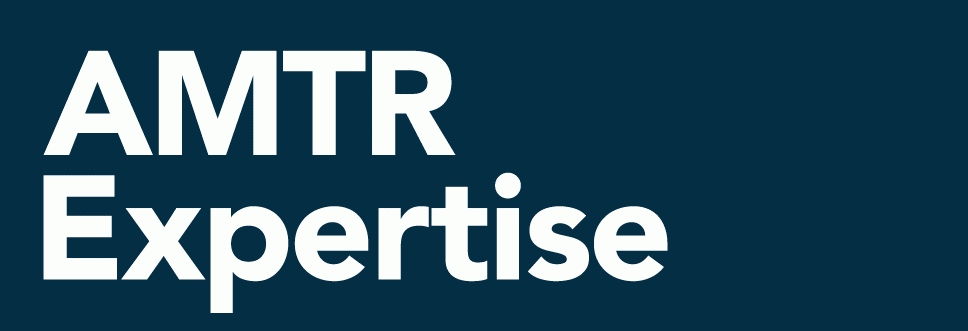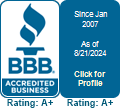The year 2018 is near, and with it will come rate increases for some carriers. Shippers are paying premium prices for freight, as there are high volumes of shipments coupled with reduced capacity. These factors are causing an increase in rates for shippers and some new record highs for those in the transportation industry.
The spot market for reefer rates achieved a three-year high in mid-November, with an average rate of $2.40 per mile. In October, rates for mid-sized freight brokers hit a two-year high, netting a per-load profit of almost $62.00. Another two-year high was noted for revenue per employee in the transportation sector; it was reportedly 183% higher than in October 2016—all according to DAT.com. As of November, the national average for spot market van rates was well on its way to hit a three-year high.
In 2017, these record highs have been a result of increased rates for shippers. This is also true in the LTL market. Several of the larger LTL carriers took rate increases in mid-2017. Some of these carriers include ABF Freight (May), Estes Express (June), Oak Harbor Freight Lines (July), AAA Cooper (July) and Old Dominion Freight Lines (August). Two of the largest LTL competitors, FedEx Freight and UPS Freight, will be implementing 4.9% rate increases before 2018.
Prepare for the new year by knowing what increases are coming. It is believed that increases will continue in the spot rate market, in LTL carrier general rates and in fees within carriers’ rules tariffs.
Unnecessary repairs mean criminal fines for United Industries, the Progress Rail Services unit out of Long Beach. Federal investigators determined employees had chosen random cars for repairs in order to increase revenue, and later dumped the parts to conceal the evidence. United Industries has agreed to pay a $5 million fine after admitting to these criminal activities.
In other news, possible STB vacancies may lead to a lone member situation. Two seats were added in 2015; however, Chairman Dan Elliott resigned in September and Deb Miller’s term expires December 31. Should Miller vacate her seat in lieu of remaining for a holdover year, Ann Begeman would be the only member left until the White House fills the remaining seats.
The Federal Railroad Administration (FRA) is currently investigating the safety impacts of operating increasingly long freight trains on U.S. railroads. Due to a number of accidents and recent derailments, the FRA is increasing their inspections, and the Government Accountability Office will launch a study on the impacts of longer trains. CSX, in particular, has increased its train length by more than 400 feet since March 2017, when CEO, Hunter Harrison, came on board. The National Transportation Safety Board (NTSB) rail division head, David Bucher, told Reuters that “train lengths are increasing across the country. It is becoming more and more common, not just with CSX.” Currently, train length is unregulated and any likelihood of regulating it would face stiff opposition. “Longer trains maximize crews, locomotives, fuel and other resources,” said Union Pacific spokeswoman, Raquel Espinoza. The NTSB, FRA and STB do not collect data on train length, except for specific accidents or mediations.
Regardless of what is shipped or how many cars it takes, AMTR has seen problems not only in safety, but in the invoicing of product. Many shippers combine different commodities to build trains, and, in some cases, train contents may be intended for more than one consignee at the destination. Computers often take an “all or nothing” approach when assigning a rate to a train with a specific amount of cars. Some railroads offer over a dozen rates for different car contingencies, and others may draw a line in the sand with a minimum. Errors may occur on both sides of the EDI process, and all it takes is one mistake to incur a significant overcharge. A trained eye, combined with human logic, will catch this type of problem.
American Truck and Rail Audits, Inc. (AMTR) is proud to announce that it has joined the Blockchain in Transport Alliance.
“As a company that provides a service that sits at the intersection of both shipper and carrier data, we are excited to get in on the ground floor of the blockchain standards setting and adoption discussion. We can’t audit for our clients without integrating shipping, financial and product data. Any changes to how that data looks, flows, or is exchanged are of critical importance to us. We understand that blockchain technology is transformative. We want to be involved as the technology develops, and feel we have some unique expertise to offer to the standards development effort as well,” says AMTR CTO, Jim Sacrey.
A blockchain is a type of distributed ledger, comprised of unchangeable, digitally recorded data in packages called blocks. Each block is then “chained” to the next block, using a cryptographic signature. This allows blockchains to be used like a ledger, which can be shared and accessed by anyone with the appropriate permissions. The built-in security mechanisms of blockchain make it extremely difficult for hackers to compromise servers participating in the network where the distributed ledgers are stored.
BiTA will build the first set of transportation industry-specific blockchain standards by engaging with the brightest minds and the most influential leaders in transportation. BiTA standards are intended to create a common framework to help organizations develop and implement blockchain technology. For AMTR, partnering with BiTA is an exciting and strategic opportunity to be involved in the industry, to stay informed for our clients, and to evolve our own internal technologies, as well.
On November 19, AMTR lost our beloved leader and CEO, Shan Scott, to neuroendocrine cancer. He fought the illness like he ran the business—with all his heart. He came to work until he could not any longer; this company was his second home, and we were all his extended family.
Shan’s first job out of college was working alongside his father, Ed Scott, and his uncle, Mike Lasiter, the founders of AMTR. Over the years, he performed every job in the company and became an expert truck and rail auditor, as well as a nationally-recognized transportation guru. In 2013, he assumed the position of CEO and springboarded AMTR into a period of innovation and growth that is still ongoing today.
Despite our great loss, AMTR is prepared to “drive on” as Shan would want. For years, there has been a joke at the company related to the phrase “WWSD” (i.e. What Would Shan Do)? Instead of answering questions for us, he worked hard to teach us to think for ourselves, to sort out complex problems, to take care of our clients, and to become the most knowledgeable transportation experts in the business. Upon reflection, he taught us well and prepared us perfectly to move forward.
Shan’s sister, Summer (Scott) Bartczak, PhD, will take over the reins of AMTR as Acting CEO. Besides being a 20+ year Air Force veteran and college professor, Summer has worked closely with Shan and the AMTR leadership in various capacities since 2013, and as such, is no stranger to the business. Although Shan will be sorely missed, the outstanding team he built at AMTR is well-prepared to lead the company into the future as the nation’s premier after-payment freight audit and transportation knowledge services company.








